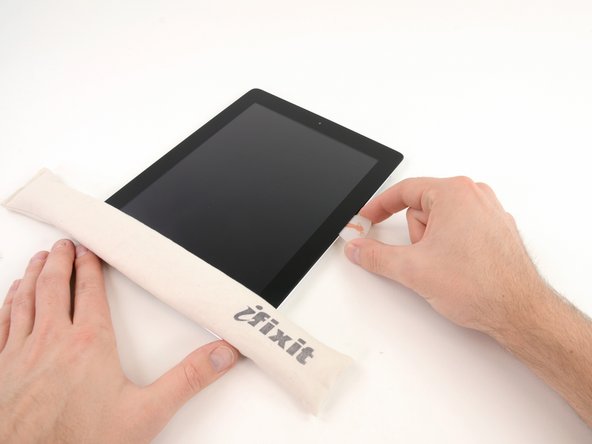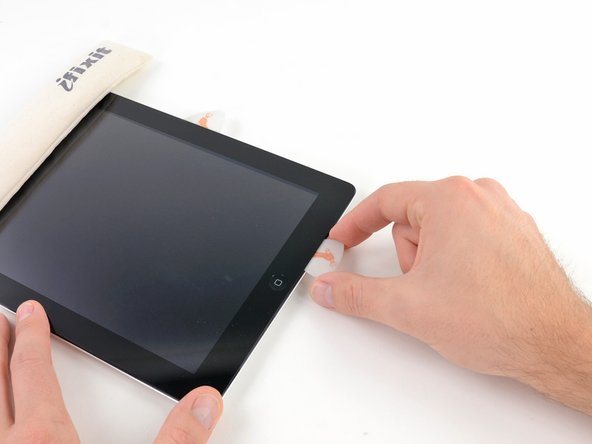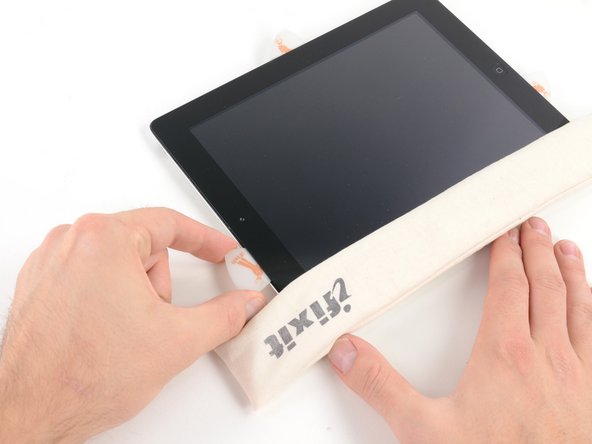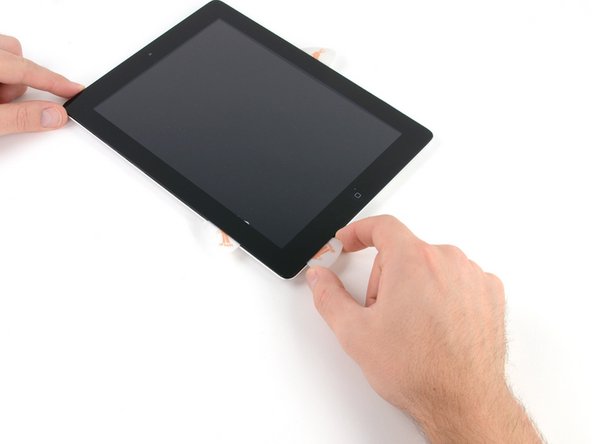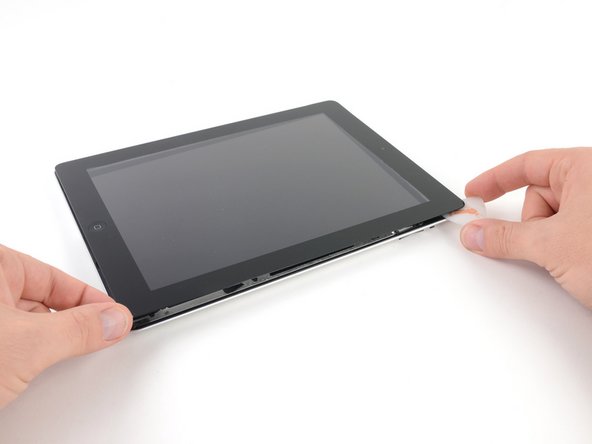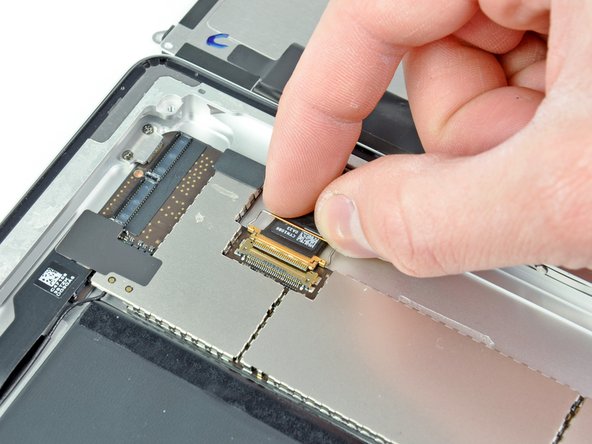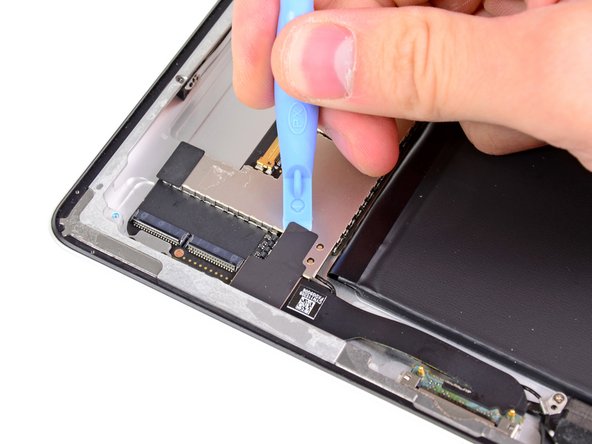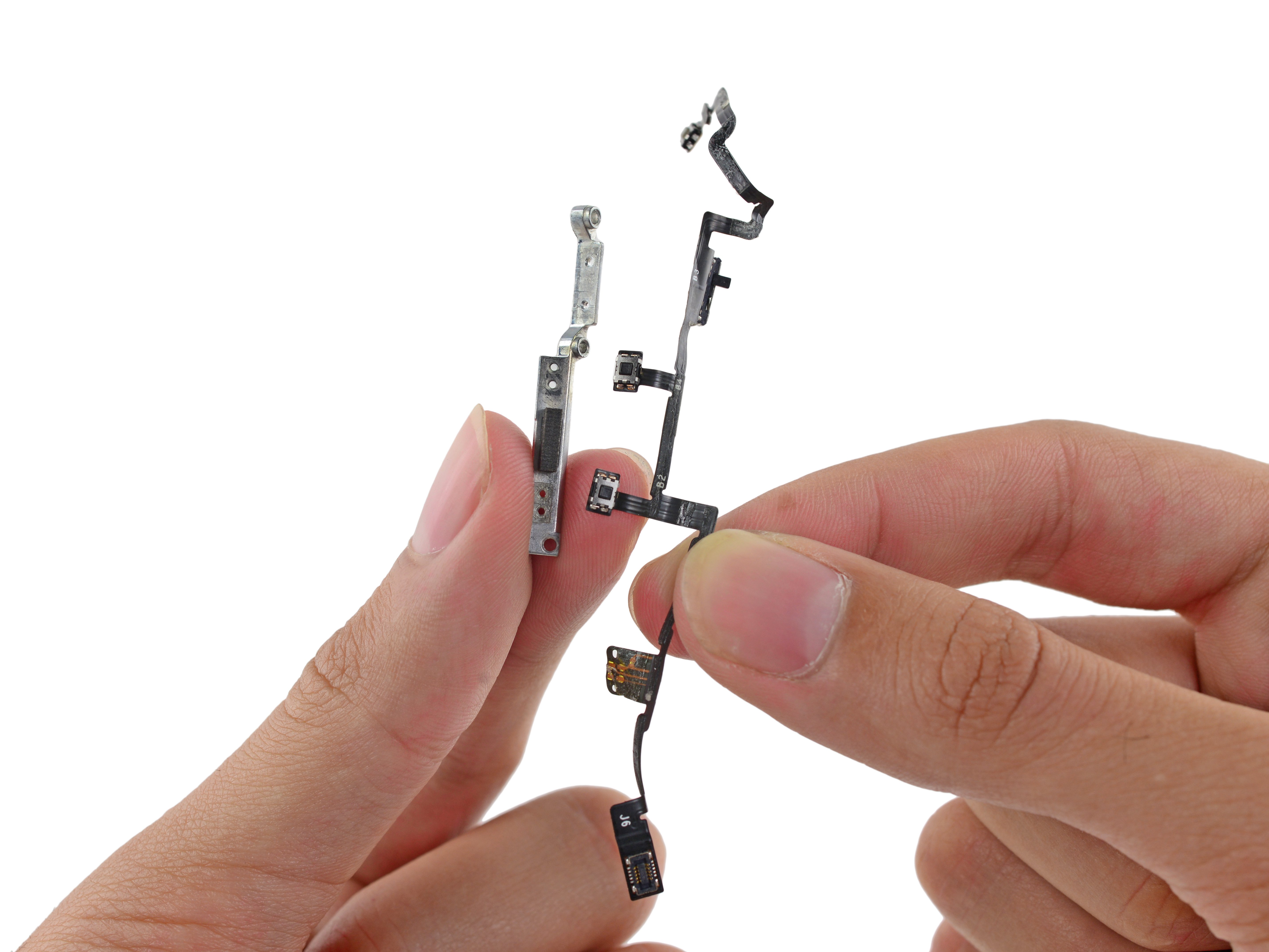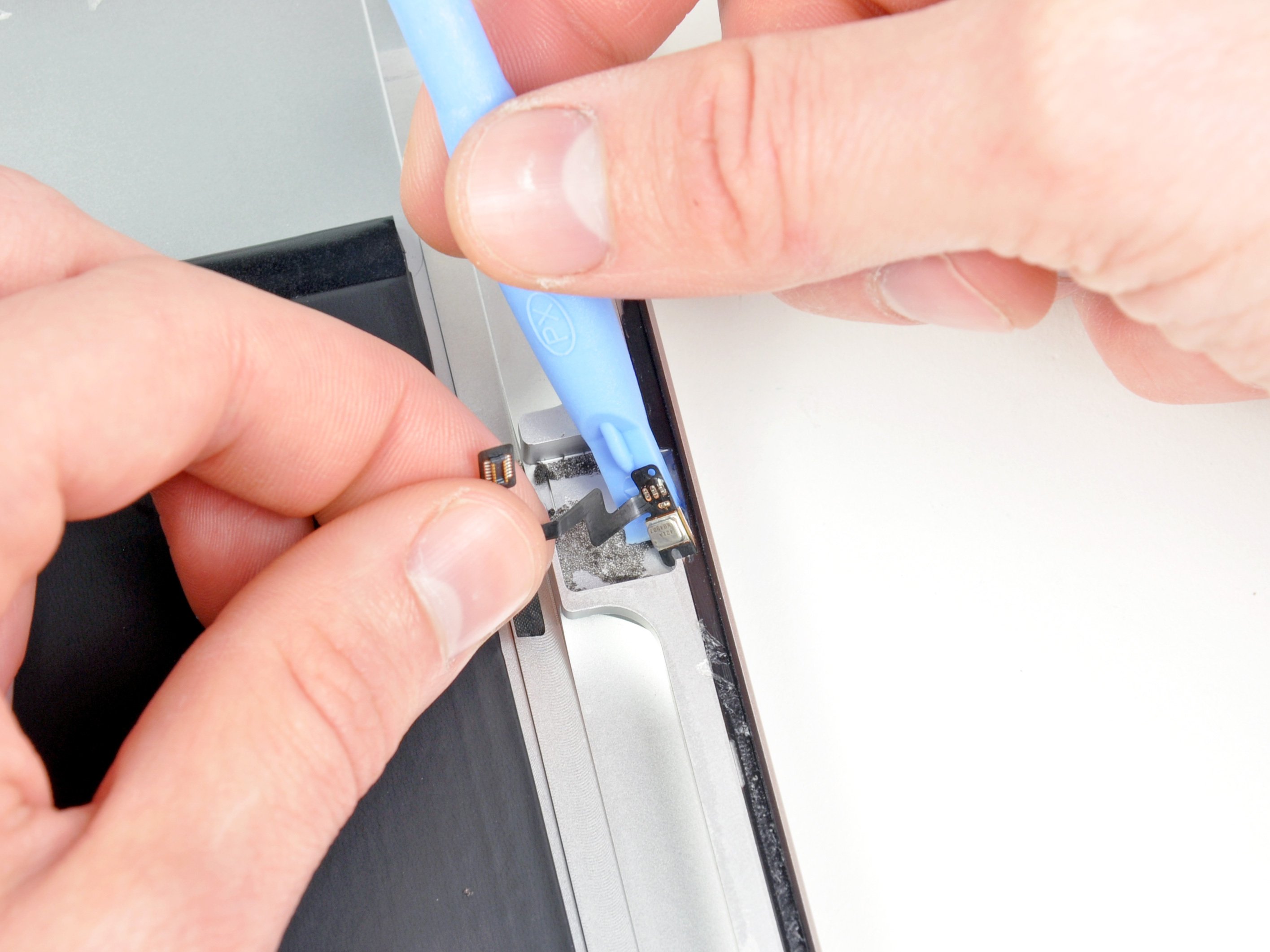iPad 2 Wi-Fi EMC 2415 Logic Board Replacement
Duration: 45 minutes
Steps: 46 Steps
Follow this step-by-step guide to swap out a busted logic board and get your device back in action.
Step 1
For carousel microwaves: Check that the plate spins smoothly. If the iOpener gets stuck, it could overheat and cause damage. Keep it spinning for optimal performance!
Give your microwave a quick scrub before you start—no one wants leftover gunk sticking to the iOpener and ruining the vibe.
- Pop the iOpener right in the middle of the microwave like it's the star of the show!
Tools Used
Step 2
Keep an eye on the heat! Don't overdo it with the iOpener—too much heat could cause it to burst. Stick to under 100˚C (212˚F) for safe heating.
If the iOpener looks swollen, just don't touch it! It’s telling you it’s not in a good mood.
Still too hot in the middle? No worries, just hang tight while it cools down a bit more. A good iOpener should stay warm for about 10 minutes, so patience is key!
Depending on your microwave's wattage, you might need to tweak the heating time a bit. The iOpener is ready when it’s just shy of being too hot to handle. Keep it cool, but not too cool!
- Pop the iOpener in the microwave for about thirty seconds to get it nice and toasty.
- As you work through the repair, if the iOpener cools down, just warm it up again in the microwave for another thirty seconds to keep things moving smoothly.
Tools Used
Step 3
Heads up! The iOpener will be super hot, so handle it like a pro—oven mitts or a thick cloth recommended.
- Carefully take the iOpener out of the microwave, grabbing one of the two flat ends so you don’t get burned by the hot middle part.
Tools Used
Step 4
Heads up! The iOpener is piping hot, so make sure to grab it only by the cool end tabs to keep your fingers safe.
No microwave? No problem! Just heat your iOpener by carefully soaking it in boiling water instead.
- Grab a pot or pan and fill it with enough water to completely cover your iOpener.
- Bring the water to a boil, then turn off the heat—no need to keep it bubbling!
- Carefully drop the iOpener into the hot water and let it soak for 2-3 minutes, making sure it's fully submerged.
- Use tongs to fish the warm iOpener out of the water—safety first!
- Give the iOpener a good dry-off with a towel so it’s ready to roll.
- Your iOpener is now warmed up and good to go! If it cools down before you’re done, just repeat the heating steps.
Tools Used
Step 5
Rock those safety glasses to keep your peepers safe, and watch out for that LCD screen—let's keep it in one piece!
This helps keep those tiny glass rebels in check and gives your prying and lifting some solid backup.
- Got a cracked display glass? Keep those shards from going rogue and stay safe by taping over the glass before you start your repair.
- Carefully cover the entire iPad screen with overlapping strips of clear packing tape until it's fully wrapped.
- Follow the rest of the guide as usual. Just a heads-up: once the glass is broken, it might keep cracking as you work, so you may need to use a metal prying tool to gently scoop out the pieces.
Step 6
Heads up! Since you’ll be handling some broken glass here, it’s a good idea to throw on some safety glasses to keep those sneaky shards from making a surprise appearance.
- Place the iOpener flat on the right edge of your iPad, making sure it’s smooth and cozy against the surface for the best contact.
- Give it about 90 seconds to warm up and work its magic before you dive into opening that front panel.
Tools Used
Step 7
Getting the tip of your opening tool wedged between the glass and plastic might need a little muscle—stay cool and patient! Gently wiggle that tool back and forth to ease it in without causing damage.
- Notice a tiny gap in the iPad's adhesive ring in the upper right corner? It’s about 2.0 inches (~5 cm) from the top. Time to take advantage of this little weakness.
- Line up the tool with the mute button. Gently slide the tip of a plastic opening tool into the gap between the front glass and the plastic bezel. Just a small nudge, enough to expand that crack a bit.
Step 8
- Carefully wedge the tool right where the plastic display bezel meets the front panel glass—right in that sweet spot!
Step 9
- With the tip of your trusty plastic opening tool snugly positioned between the front glass and plastic bezel, gently slide a plastic opening pick into the gap right alongside the tool. You're doing great!
Step 10
- Gently take out the plastic opening tool from your iPad, and slide that opening pick a little deeper beneath the front glass, about half an inch. You've got this!
Step 11
- As you gently work on loosening the adhesive on the right side of your iPad, give your iOpener a little reheat love and place it back on the bottom edge of the iPad.
Tools Used
Step 12
This adhesive is super tough, so you might need to bring your A-game. Take your time and go steady!
If you notice the tip of the opening pick peeking out from under the front glass, gently pull it back just a bit. Using the pick this deep won’t cause any harm, but it might spread some sticky adhesive onto the LCD, so heads up!
- As the iOpener warms up the bottom edge, let's start peeling away that adhesive from the right edge of your iPad.
- Gently slide the opening pick down the edge of the iPad, freeing the adhesive as you go along.
Tools Used
Step 13
You might need to slide the heated iOpener back onto the right edge of the iPad while peeling off the adhesive, depending on how much time the iPad has had to cool down during your work.
- If your opening pick gets stuck in the adhesive, no worries — just gently "roll" the pick along the edge of the iPad to keep loosening that sticky stuff.
Tools Used
Step 14
- Before lifting the first opening pick from the bottom corner of the iPad, slide a second pick under the right edge of the front glass to keep that stubborn adhesive from sticking back together.
- Warm up the iOpener again, then shift it over to the top edge of the iPad to keep things nice and toasty.
Tools Used
Step 15
The Wi-Fi antenna hangs out on the bottom right edge of the iPad's rear case, held in place by screws and a cable. Since it’s sitting at a bit of a tricky angle, take your time and handle it gently—one wrong move and the antenna might be toast!
- Heads up: the next steps call for some serious care.
- You’ll need to carefully loosen the adhesive holding the antenna to the front panel without messing up the delicate connections linking the antenna to the bottom of the iPad. Take it slow and follow along closely.
Step 16
Hey there! Just a heads up: don't push that pick any further than the bottom right corner. You might accidentally give your Wi-Fi antenna a little love tap, and we wouldn't want that!
- Gently slide the opening pick around the bottom right corner of the iPad to loosen the adhesive holding it in place.
Step 17
Slide your opening pick carefully along the bottom right edge of the front panel. Watch out for the Wi-Fi antenna hanging out near the corner—it’s super close and can get cut if the adhesive comes loose the wrong way.
Don't pull the pick all the way out from under the front glass. Just ease it out a bit so about 1/8" (3 mm) of the tip stays tucked under the glass. This will help you keep everything in place while you move on to the next step.
- Gently slide the opening pick along the bottom edge of the iPad to loosen the adhesive near the Wi-Fi antenna. Keep it smooth and steady!
Step 18
- After you’ve passed the Wi-Fi antenna (about 3" (75 mm) from the right edge, right next to the home button), slide the opening pick all the way in.
- Gently slide the pick to the right to loosen the adhesive holding the Wi-Fi antenna to the front glass.
- The antenna is screwed and connected by a cable at the bottom of the iPad. This step frees the antenna from the front panel so it stays safe when you remove the panel.
Step 19
Keep your iOpener heating sessions to under a minute, and give it a cool two-minute breather before firing it up again. Your device (and your patience) will thank you!
If the adhesive has cooled down too much along the bottom edge, just heat up your iOpener again and give the adhesive a little warmth where you’re working. It'll help get everything back to a good working temp!
- Keep peeling away the adhesive at the bottom of the iPad. Gently pull the opening pick out far enough to maneuver around the home button, then reinsert it about 1/2 inch (10 mm) deep once you've passed the home button. You're doing great!
Tools Used
Step 20
For iPad 4 models, slide the pick in no deeper than 1/2 inch (10 mm) here to keep the home button ribbon cable safe and sound.
- Gently peel away the adhesive along the bottom edge of the iPad. Keep it steady and slow—you've got this!
- Slip the opening pick carefully under the front glass near the home button and leave it there. It's like a little helper, holding everything in place while you continue.
Step 21
- Pop that iOpener in the microwave for a bit and then place it on the left edge of the iPad. This will help get the adhesive in that area all warmed up and ready to go!
Tools Used
Step 22
If the adhesive has cooled down too much, pop the iOpener back along the top edge and keep going. If the iOpener itself feels chilly, just give it another quick heat-up and you’re good to go.
- Gently slide the opening pick along the top edge of the iPad, giving it a little wiggle to navigate around the front-facing camera bracket.
- This section has some serious adhesive power, so don't be shy about applying a little force. Just take it slow and steady, making sure you don’t slip or harm yourself—or your iPad!
- If the opening pick feels stuck, try giving it a little 'roll' as shown in step 9 to get past the sticky bits.
Tools Used
Step 23
If the adhesive feels warm enough, go ahead and take the iOpener off the iPad for easier handling. But if it’s still a bit too sticky, just give the iOpener another heat-up and place it back on the left edge while you get to work.
- Keep peeling back that adhesive along the top edge of your iPad, and gently maneuver the opening pick around the top left corner. You’ve got this!
Tools Used
Step 24
The digitizer cable is chilling about 2" (50 mm) from the bottom of the iPad. Keep your pick moving until you’re around 2.25" (60 mm) from the bottom—don’t slide any further!
- Gently glide the opening pick along the left edge of your iPad, peeling away that stubborn adhesive as you go. The adhesive here is pretty thin thanks to the digitizer running along the entire left side. Just be sure to keep the pick shallow—no deeper than 1/2 inch (10 mm)—to avoid any mishaps with the digitizer. You've got this!
Step 25
Careful now! The bottom of that digitizer cable is hanging out just about 1 inch (25 mm) from the bottom of the iPad. Take your time and be gentle, so you don’t accidentally cut this little guy. You've got this!
- With your trusty opening pick still nestled under the bottom edge of the iPad, gently coax the adhesive loose at the bottom left corner. You're doing great!
Step 26
It looks like some of that pesky adhesive around the edges of your iPad might have reattached itself. No worries! Just slide a pick under the edge where the front glass is still holding on tight and give that adhesive a little snip. You're on the right track!
- Take one of the opening picks and gently lift the bottom right corner of the iPad. Then, use your fingers to grab and lift it up. Simple, right?
Step 27
Watch out for any sticky stuff that might still be hanging on! Grab an opening pick and gently slice through any adhesive holding that front panel in place. You've got this!
- Grab the iPad by the top and bottom right corners and gently swivel the front glass away from the device.
- When putting everything back together, give the LCD a good once-over with a microfiber cloth and some compressed air to wipe away any dust or fingerprints before snapping the glass back in place.
Step 28
- Time to get your screwdriver ready! Let's tackle those four 2.0 mm Phillips screws that are holding the LCD snugly in place against the rear case. Unscrew them and give your device the freedom it deserves!
Step 29
Handle that LCD with care! Don't try to detach it from the iPad just yet—it’s still connected by its display data cable while you give it a little twist.
The front panel ribbon cables are tucked just under the LCD. To get to them, gently flip the LCD over and move it aside for a moment.
- Gently lift the LCD from the edge closest to the volume buttons and flip it out of the rear case, just like turning a page in your favorite book.
- Now, place the LCD face down on the front panel, treating it as gently as a precious artifact.
Step 30
Make sure you're gently lifting the hinged retaining flaps, not the delicate sockets themselves—handle with care!
Check out the second picture where the retaining flaps are marked in red, making them easy to spot.
- Grab your trusty plastic opening tool and gently lift the retaining flaps on those two digitizer ribbon cable ZIF sockets. You've got this!
Step 31
- Gently slide the edge of a plastic opening tool under the digitizer cable to lift it off the shields on the logic board.
- Slowly peel the digitizer cable away from the adhesive holding it to the side of the rear case.
Step 32
- Gently wiggle and pull the digitizer ribbon cable straight out from its two snug sockets on the logic board. Keep it cool and steady!
Step 33
Handle the LCD with care, and remember, it's not going anywhere! Just gently rotate it over without trying to detach it from the iPad—its cable is still attached and ready to hang out.
To detach the front panel assembly, you'll need to gently slide the ribbon cable out from between the case and the LCD. A little wiggle of the LCD will help create some extra space to work with.
- Grab the LCD by its long edge opposite the digitizer cable and carefully flip it back toward the rear case, like closing a book.
- With the LCD held up, gently slide the front panel away from the iPad. Watch out for the digitizer cable—don’t let it get caught on the rear case or LCD.
- Place the LCD back into the body to keep it safe while you work.
Step 34
Time to gently flip the iPad's LCD out of its case so we can get to the good stuff inside.
- Carefully lift the LCD from the long edge nearest to the volume buttons and gently flip it open like you’re turning a page in a book.
- Place the LCD face down on a clean surface—pro tip: a soft cloth underneath will keep it scratch-free.
Step 35
Heads up! When unplugging the connector, avoid yanking it straight up from its socket to keep everything happy and intact.
- Grab your trusty plastic opening tool and gently nudge that display data cable lock upwards. It's like giving it a little lift!
- Now, carefully pull the display data cable out of its snug socket. Easy peasy!
Step 36
- Gently separate the LCD assembly from the rear panel assembly.
Step 37
- If you've got it, grab a plastic opening tool to gently lift off that pesky tape covering the dock connector cable.
- Next, take the edge of your trusty plastic opening tool and carefully nudge the dock connector cable's connector up from its snug spot on the logic board.
- Now, peel away the dock connector ribbon cable from the rear panel like you're unveiling a surprise!
Step 38
Take care to gently lift just the connector, steering clear of the logic board socket—otherwise, you might just end up giving it a little too much love and damage it!
- Gently lift the speaker cable connector straight out of its socket on the logic board.
Step 39
Make sure you're prying up on the hinged flap, not the socket itself—treat the socket with care!
- Gently slide the edge of a plastic opening tool under the retaining flap on the headphone jack and front camera cable ZIF socket to flip it up.
- Carefully peel the headphone jack and front camera cable away from the rear case.
Step 40
- Gently pull the headphone jack and front camera ribbon cable straight out from its cozy spot on the logic board. You've got this!
Step 41
Avoid pulling the cable straight up when disconnecting it; a gentle approach keeps things happy.
- Gently slide the edge of a plastic opening tool under the retainer holding the control board cable connector in place on the logic board and flip it up.
- Carefully pull the connector straight out from its socket on the logic board.
Step 42
- First up, grab your trusty Phillips screwdriver and take out those two 2.1 mm screws that are holding the logic board bracket to the rear case, right by the digitizer cable socket. It’s like a little treasure hunt!
- Now that those screws are out, gently lift the logic board bracket away from the rear case. You're making progress, keep it up!
Step 43
- Unscrew the last three 2.6 mm Phillips screws holding the logic board to the rear case and set them free.
Step 44
- Carefully slide the edge of a plastic opening tool under the logic board and gently lift it away from the sticky adhesive holding it to the rear case.
Step 45
Hold up! Don't try to yank it out just yet. There's still an antenna cable hanging on, so give it a little more care.
- Gently lift the logic board from the rear case and give it a little tilt towards the battery. It’s like setting it free, but with care!
Step 46
- To put your device back together, just follow these steps in reverse. Don’t forget to check out our iPad 2 Wi-Fi Front Panel Adhesive strips guide to get that front panel sticking perfectly. If things get tricky, you can always schedule a repair!
























